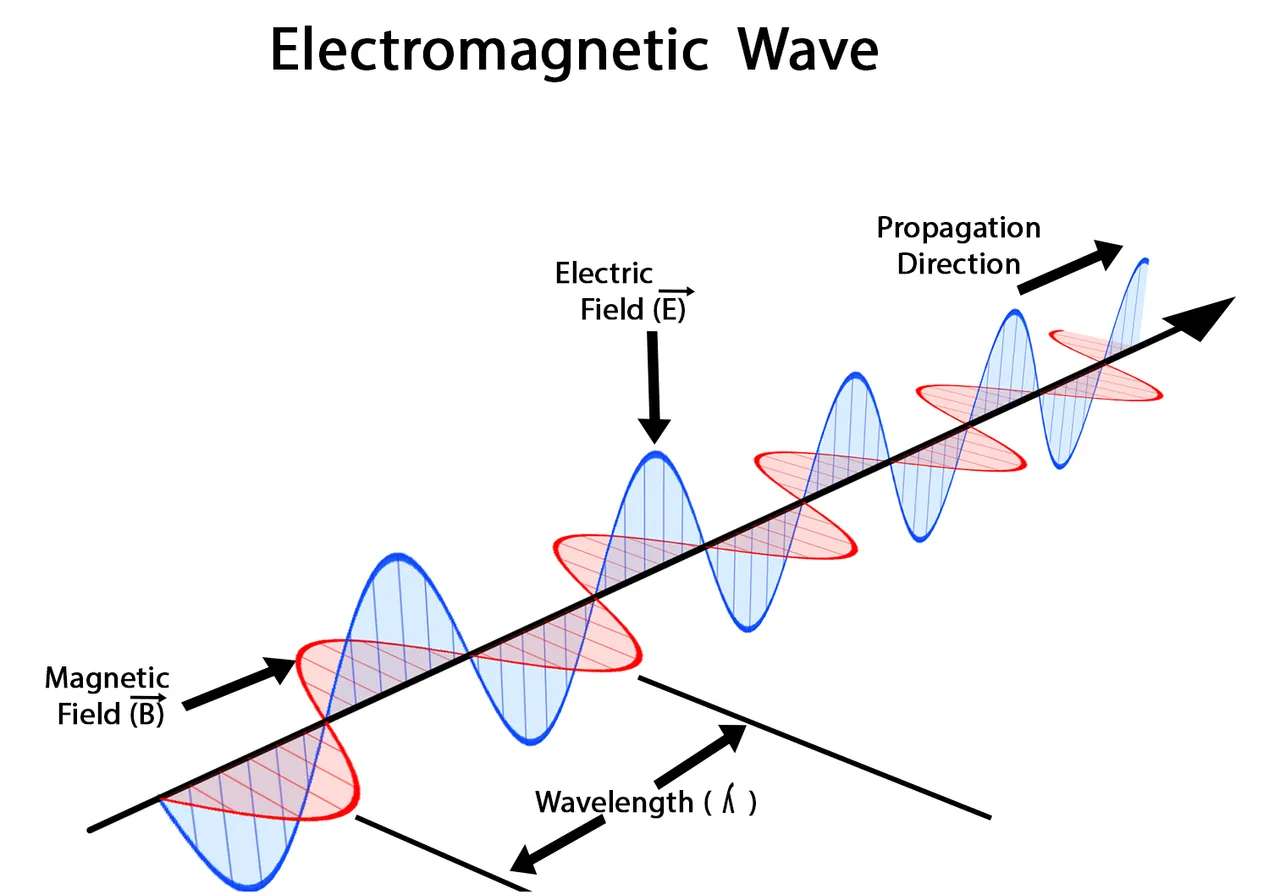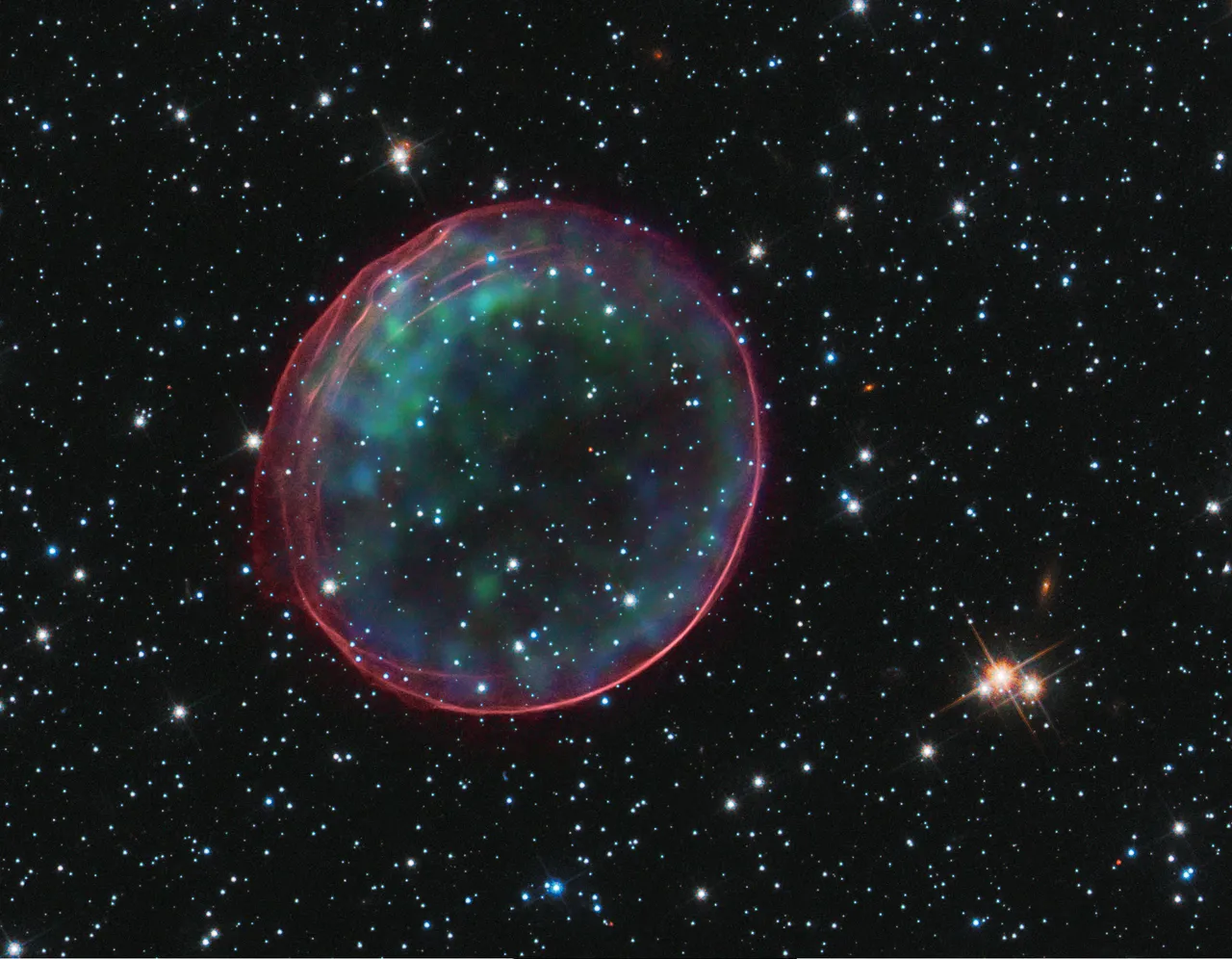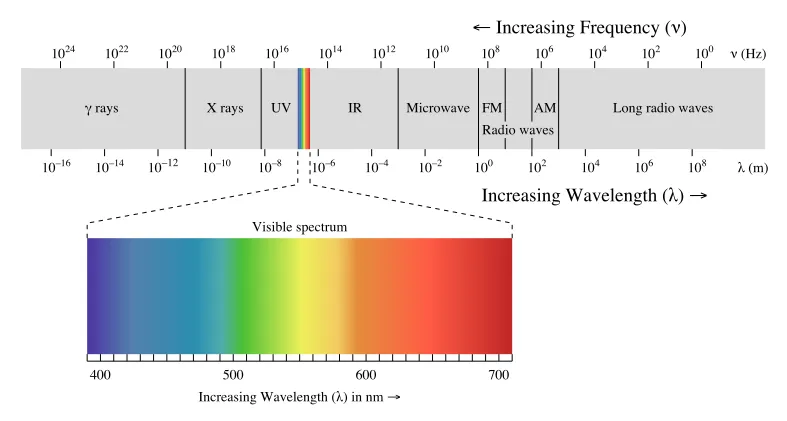It is said that light is an electromagnetic wave, having an electric field and a magnetic field. This, however, does not provide a fundamental understanding of what is truly happening. In fact, it is an approximation that does not account for gravity's role in the process.
The first step to understanding is recognition that gravity causes everything. Most significant is that gravity causes electromagnetic fields. This is because the universe is infinite. What this means is that there is no end to how large or how small mass can be, relative to atoms.
At the limits of our perception, that which we experience always is guiding even the most subtle of processes. Gravity plays its hand in all things.
Important to note is that all things function the same. Whether it be a star or an electron, the same mechanisms are occurring in all systems. Due to a star's mass, these processes occur so slowly--relative to the atoms of which we are composed--that we barely ever see a single star in more than two stages (before and after a single or a few supernova, at most).
However, due to the relative mass of electrons, the observed rate at which they function is distinctly faster. So much faster, in fact, that what we see is vibratory; electrons are continuously "excited" around us, over and over--due to energy flow into them from an outside source (say, the sun)--they supernova.
This literally allows for our ability to observe our surroundings.
It is in this periodic vibratory nature of instability-stability cycles of systems where the clues to how the electromagnetic spectrum is the result of gravity can be found.
While we may call it an "excited electron", it is important to also recognize that it is truly a supernova occurring. As these systems are so substantially different in mass, we observe the process in a different way, but the same process underlies the observations. Due to this, I will be referring to an "excited electron" as the supernova of an electron. This is known as the Principle of Correspondence. "As above, so below. As below, so above."
When an electron supernovas, it releases a sudden burst of energy in all directions. It then, as a star does, enters a highly stable state. Due to its relative mass and the continued influx of energy into the system from outside sources (say again, the sun), it then supernovas again. And again, and again, and again. This occurs in a way we observe as rapidly and periodic due to relative mass difference.
The lack of a uniform stream of emitted particles is very significant to the formation of an electromagnetic wave.
Particles are then expelled in all directions, just as in a supernova. In this case, it is what we observe as an "electron" that supernovas, and thus the mass of the particles emitted is so small that it is beyond our limits of perception. The universe is infinite, however, and knows no bounds nor is it limited by the limitations of the observers therein. Beyond a certain point of relatively infinitesimal mass, somewhere between the neutrino and the photon, there is a point where we are slowly pushing the boundaries of the subtlety of mass that we can detect. As we have not pushed that boundary to include photons, we claim them to be massless. Absolute zero and infinitesimal are significantly different things. We, however, have indirectly observed the mass of photons by the recognition of the entire electromagnetic spectrum, which is built upon variations in the masses of the particles emitted by the system's supernovae creating the light.
Then, this stream of particles in all directions can be analyzed by considering one segment of the stream, synonymous with a ray of light. Due to the pulsation of these supernovae, the emissions are non-uniform. This results in variations in the amount of mass emitted as shown here:

With each supernova, there is a wave of high density material released, intermittently filled with periods of relatively low density material released when the system is stable. For visualization, this has been shown as "blocks" labeled SN1, SN2, SN3, SN4 as shown because the earlier supernovae are the furthest away.
These are the largest particles emitted, which is a function of the mass of the object undergoing supernova, while the electron normally emits much lower mass particles as a star does relative to its supernova. These particles, traveling with the larger mass particles of the supernova high density zones, interact with the relatively higher mass particles of the "SN(n)" zones as follows:

The force of gravity causes these low mass "ether" particles to weave upward and downward, as each "high density" portion brings the interweaving ether to create a wave pattern. The momentum, then, carries the ether particles through the center of gravity where they are redirected back towards the center of gravity by reversal in the direction of the force of gravity. As a result, the electric field is produced in the y-plane.
In much the same way, interaction of the relatively higher mass particles of the "SN(n)" as well as the perpendicular electric field with even smaller mass "ether" particles causes another perpendicular flow of these smaller mass ether particles to weave back and forth through the center of gravity. Thereby the magnetic field is produced in the z-plane as follows:

Thus, gravity is the root cause of electromagnetic waves. As it has been shown that gravity causes electromagnetic fields, it is shown that gravity is the cause of electromagnetism.
For more information, check out my other posts here on Steemit or my website, CascadingUniverse.Org, or feel free to come hang out in my 24-hour stream, The Life of a Mad Scientist!
Thanks for reading!
-Steve Scully


